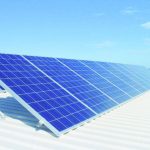State-run Solar Energy Corporation of India (SECI) has invited bids from wind and solar plants to supply 5,000 mega-watt (MW) power under a round-the-clock scheme.
The scheme involves purchases of renewable energy, along with coal-based power, so that buyers have the assurance of uninterrupted electricity supply. Renewable power may include a combination of solar, wind and small hydro power with or without any energy storage system.
It also aims to provide a leg-up to the renewable energy sector by addressing the issues of intermittency, limited hours of supply and low capacity utilisations of solar and wind power plants, and make them more attractive for state-owned power distribution companies (discoms). As earlier reported by FE, it is also seen to provide some relief to lenders by enabling stressed coal power plants to find buyers for their electricity, thereby reducing the quantum of non-performing assets.
SECI as an intermediary agency would carry out auctions where sellers can quote a single tariff for supplying a combination of renewable and coal-based power. The generator is required to supply at least 51% from upcoming or under-construction renewable sources. The proportion of thermal tariff shall be adjusted to cover the possible changes in coal. The composite tariff would consist of 51% renewable energy tariff, 30% thermal fuel cost and the remaining would account for fixed thermal tariff. SECI will sign 25-year supply contract with the lowest bidders, and then sell the power to discoms, and earn a trading margin of `0.07/unit.
The scheme has been proposed at a time when renewable energy is being seen as an additional burden for discoms. In order to manage the infirm nature of renewable power, discoms have to procure balancing electricity for stabilising the grid and to meet their requirements when the sun doesn’t shine or the wind doesn’t blow, raising the power procurement cost for these cash-strapped entities.
The renewable energy industry is one of the major FDI earners with the sector attracting $4.8-billion foreign capital till 2019 end since FY15. As on January 31, the installed renewable energy capacity was 86.32 gigawatts (GW). Further, an additional 35.1 GW is under various stages of implementation and 34.5 GW under various stages of bidding. If the 45.4 GW of hydro and 6.8 GW of nuclear capacities are included, the target under the Paris climate change accord of having 40% of installed power generation capacity from non-fossil fuel sources can be achieved by 2022 itself.
The major challenges being faced by the renewable energy developers are land acquisition, evacuation infrastructure, non-conducive state policies, curtailment, unwillingness of discoms to purchase renewable energy, delay in receiving payment from discoms and seeking revision of power purchase agreements.





